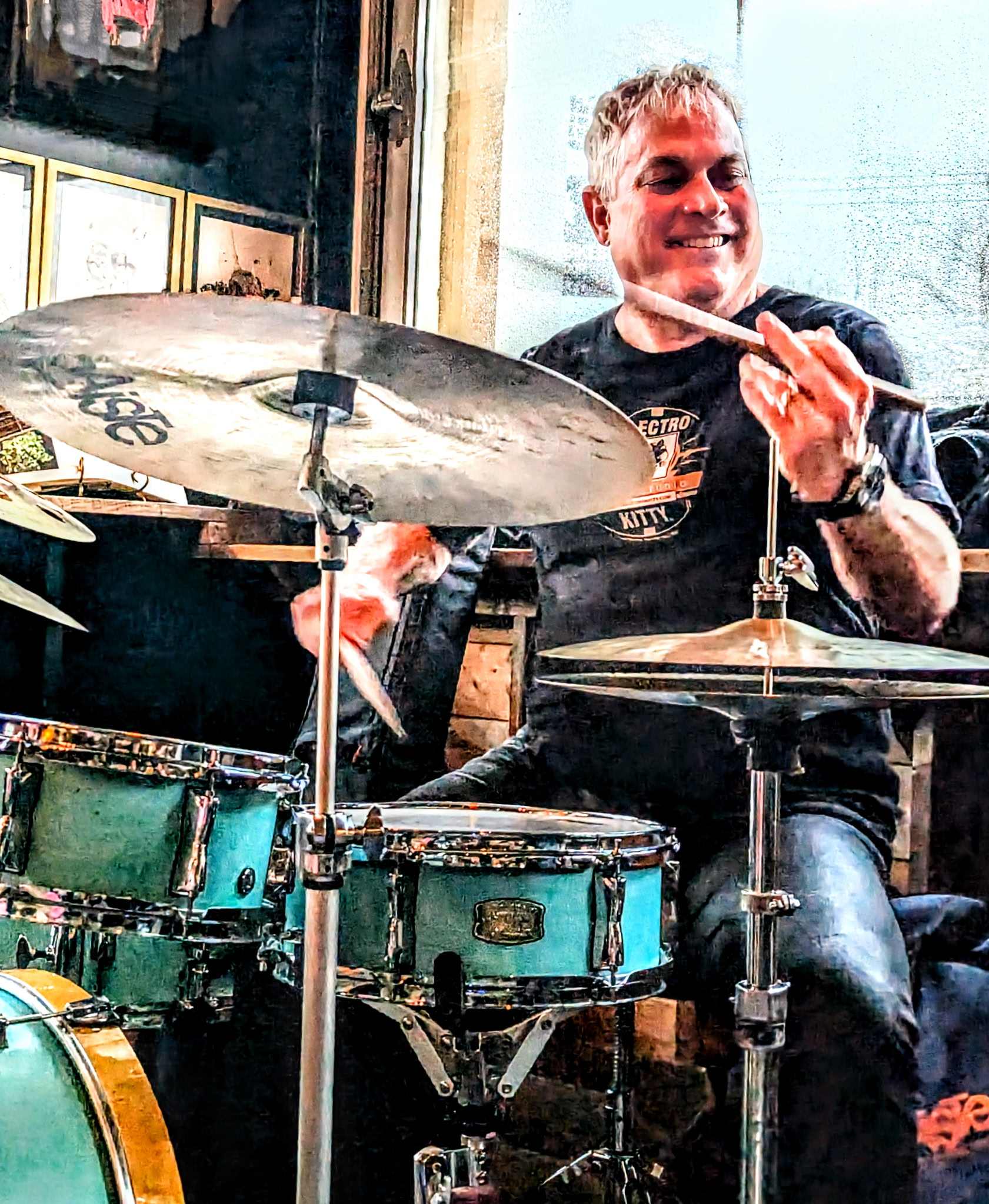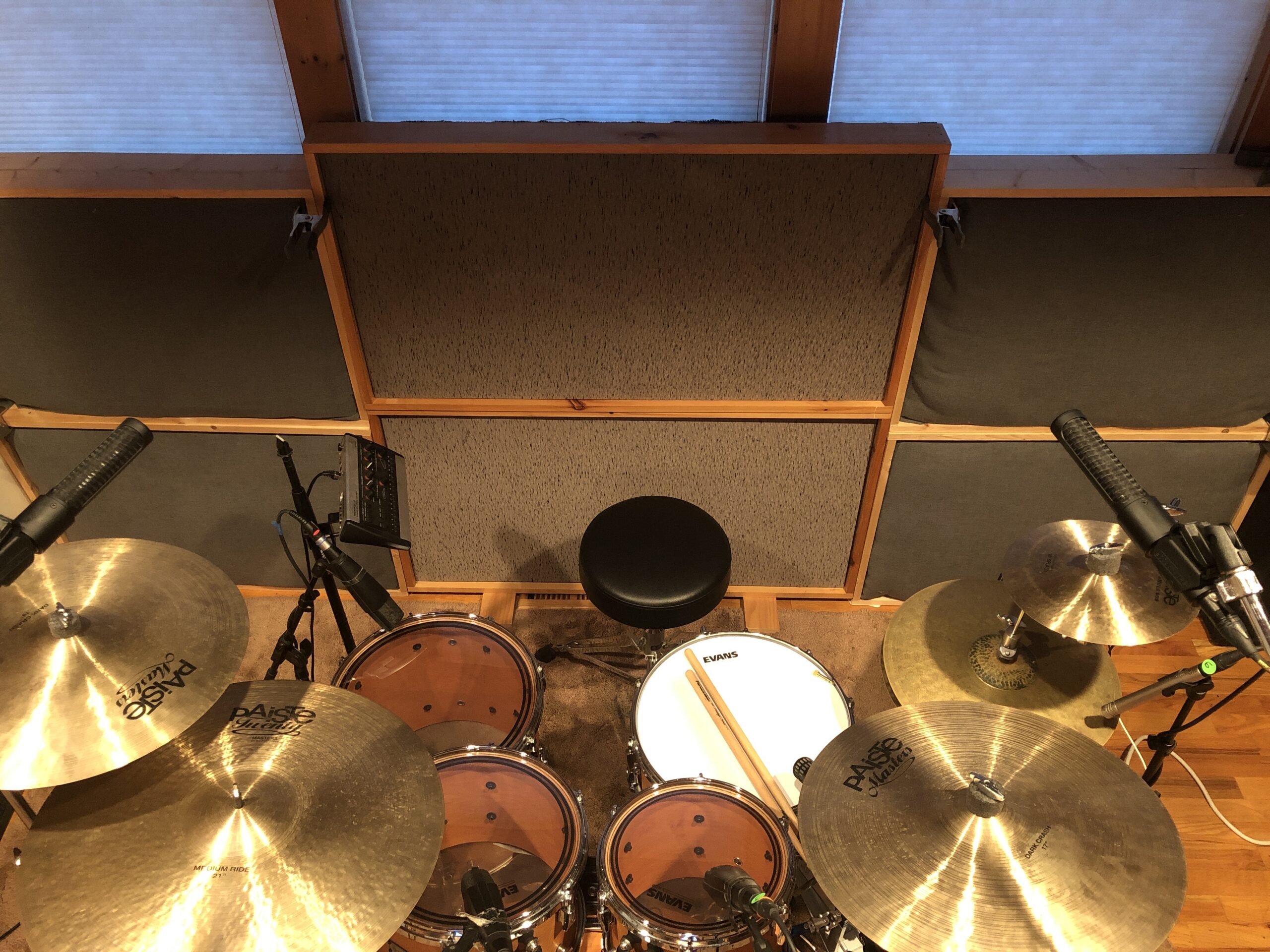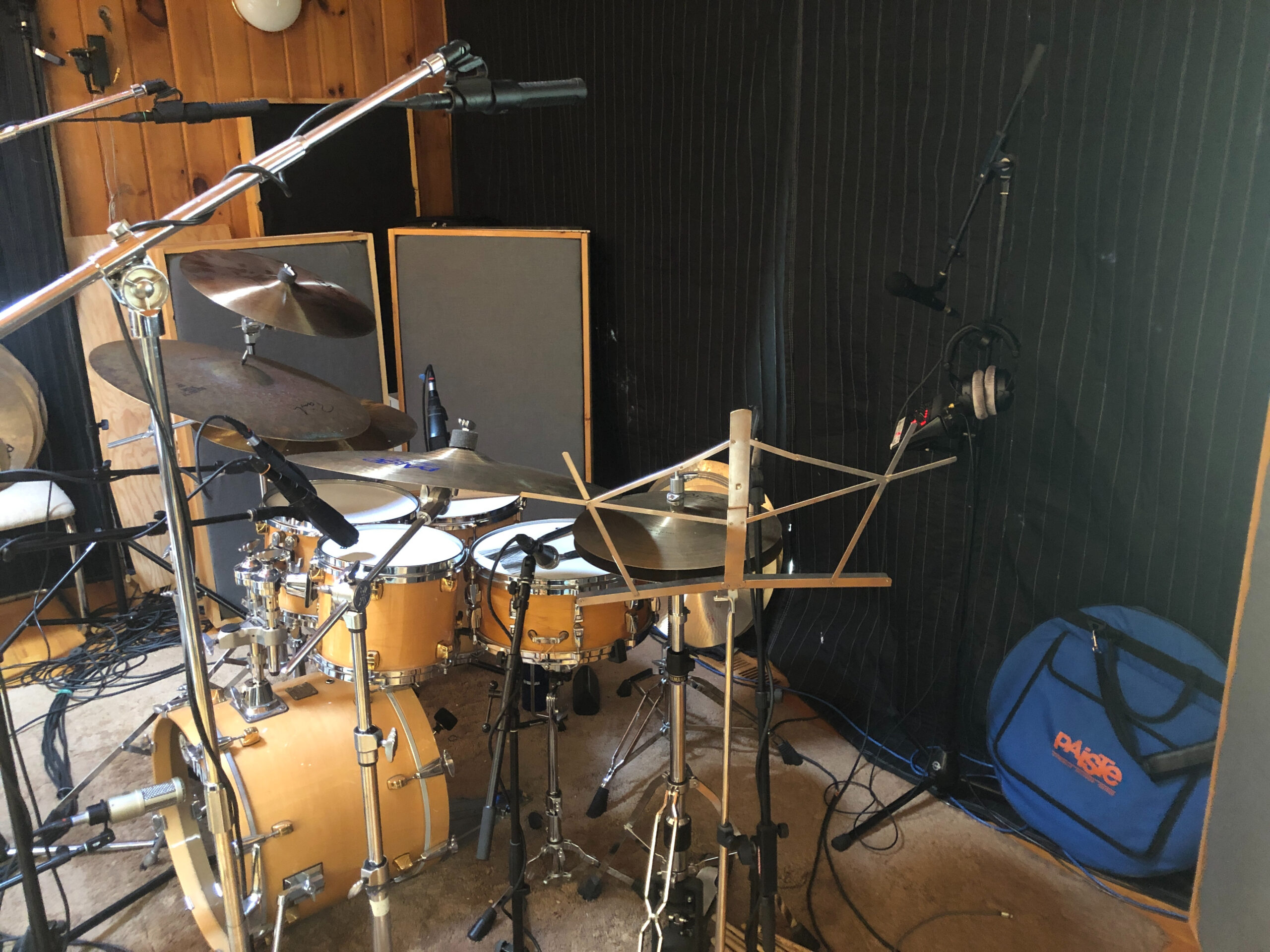From jazz ensembles to Broadway pits, drummer and educator Karl Latham has built a career on versatility. Whether locking into a groove with a click or exploring wide-open avant-garde soundscapes, his approach always centers on capturing the essence of the music in front of him.
Latham’s attention to detail goes far beyond sticks and cymbals—his philosophy extends into mic choice and placement, with a particular passion for ribbon microphones. As both a performer and educator, he sees the microphone not just as a recording tool but as a creative partner that can shape tone, technique, and vibe.
In this interview, Latham shares how AEA ribbons have become integral to his sessions. From first being blown away by a pair of overheads to using N8s and R84s as his go-to setup at Firefly Studio, he explains why “hearing is believing” when it comes to ribbons, and how students and engineers alike can expand their sonic palette by embracing them.
How would you describe your philosophy when it comes to capturing drums?
Great question! Like many of us, I often wear different hats: artist, craftsman and somewhere in between. In all situations I try to capture the sound and “groove” that best serves the music, artist and vibe. That can range for me from laying it down with a click to wide open avant garde soundscapes. To achieve this I spend a great amount of detail on my choices: drums, heads, cymbals, sticks/implements (sizes, material and tips), tuning and microphone choice and placement. Then I try to most naturally and faithfully capture the vibe being created.
What drew you to ribbon microphones as a tool for that kind of capture?
The unparalleled combination of detail, openness and natural warmth that I never heard before, even from the finest LDC’s or SDC’s.
Do you remember your first experience using an AEA mic on drums?
My first experience was revelatory and turned me into a ribbon mic fanatic, just ask my engineer friends 🙂 The first time I “heard” AEA Ribbon Microphones an engineer pulled out a pair of AEA’s for the overheads. They hit the first playback and I experienced a level of detail combined with a totally natural openness that blew my mind.
Which AEA mics do you find yourself reaching for most often, and how are you typically using them?
My absolute “goto” overheads are my N8’s. I have the stereo kit, giving me a wide range of options for placement and capture. I use them on all of my own recordings. I have been lately adding an R84, to a close mic LDC, a few feet from the resonant bass drum head. A very well known engineer/friend that I send my tracks to recently asked: “how did you record that bass drum?”.
Any time there is an upright bassist, saxophonist, trumpeter, flutist, guitarist I use an R84. I often capture vocalists with them as well.
As both a performer and educator, how do you introduce students or younger drummers to the concept of mic selection?
One of the colleges I teach at has an amazing music technology curriculum and state of the art studios. Of course they have AEA’s in the cabinet. I try to impart to my students how important microphone selection and placement can be in creating a given vibe. A Large Diaphragm Condenser, Small Diaphragm Condenser, Dynamic or Ribbon all capture and create different vibes. It is so important to know what to reach for when you know what you are trying to create.
You’ve mentioned that mic choice can actually influence a player’s technique. Can you expand on that?
I certainly feel that what I am hearing in the cans (I also choose my headphones wisely for the different musicians on a session) or playback monitors directly influences how I am approaching playing the instrument to make it speak the way I am going for. It is not only my hand and foot techniques that I may change, I may try different stick/implement weights, tip types, materials, cymbals, etc. depending on what I hear being captured in the moment.
Are there any particular sessions or performances where an AEA mic helped you capture something really special?
All of my recordings here 🙂 my first full on AEA recording was Living Standards with renowned bassist Mark Egan and Vic Juris. It was my first recording here at Firefly. I had N8’s on the overheads and an N22 on the bass drum.
Two recordings I made first as livestreaming events are: Together with Alex Collins and Transcendence with Bob Gluck/Christopher Dean Sullivan/Karl Latham which both have stellar drum sounds.
My most recent release Living Standards II with Mark Egan, Mitch Stein, Henry Hey, Roger Squitero and Wolfgang Lackerschmid I feel has the best drum sounds so far: N8’s, R84 in front of the bass drum, R84 guitar cabinet.
What advice would you give to drummers or producers thinking about incorporating ribbon mics into their workflow?
I think hearing is believing. I have experienced “resistance” from some engineers that I have brought in on certain sessions. They are very familiar with their SDC or LDC choices that have always “worked” for them. As soon as I convince them to just give my AEA’s a try, they usually are hooked!
I think any situation where you want to naturally capture an instrument, voice or amplifier in a detailed, completely “open” way a Ribbon should be your first goto choice. When I go back to many recordings that I love, when I see photos of the sessions, 9 out 10 times a ribbon is somewhere in view. Hearing IS believing.
Finally, how would you sum up the role AEA ribbons have played in your creative process?
My AEA’s are integral to my creative process. When I am in my creative head and going for sounds that I feel will serve the music and vibe, anytime I hit the record button AEA’s will be capturing amazing sounds in all of my rooms. They capture what I hear!


